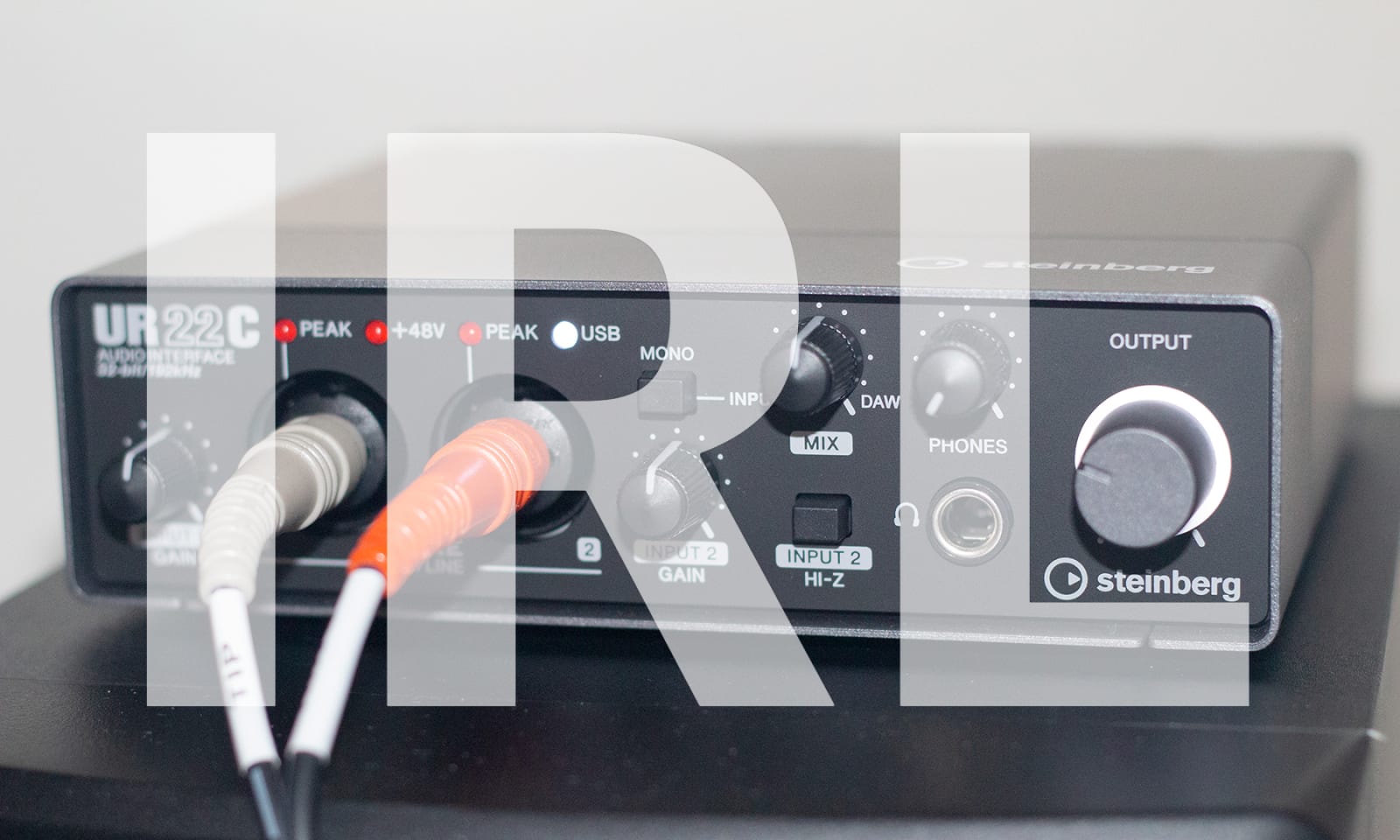
This week, Contributing Writer Marc DeAngelis tells us about his new Steinberg audio interface.

Marc DeAngelis
Contributing Writer
One of my hobbies is playing music. My friend and I saved up for an 8-track Tascam recorder in the early 2000s and got hooked on recording tracks. Once digital audio workstations came down in price, I tossed aside the magnetic tapes. Recently, I decided to upgrade my computer to the latest 27-inch iMac, and I saw an excuse to change up my music-making peripherals as well.
My old audio interface, which translates microphone and instrument signals into something that a computer can understand, uses a FireWire 800 connection. Apple hasn't shipped any computers with FireWire since 2012, so to get my mini studio back up and running, I could either buy an adapter for $7 or a whole new interface for about $200. Naturally, I went with the latter. I chose the latest iteration of Steinberg's UR22C ($190) thanks to its built-in MIDI ports, Yamaha's D-Pre preamps and -- neurotic though my reasoning may be -- its USB 3.1 connection.
The vast majority of audio interface manufacturers still use USB 2.0. Companies like Focusrite claim that, while USB 3.0 has a much greater bandwidth than USB 2.0, it doesn't reduce a signal's latency and therefore has no practical benefit. What these companies are missing is the fact that USB 3.0 differs from USB 2.0 in how it handles something called data polling.
With USB 2.0, data is transmitted after the host (the computer) asks the device (the audio interface) if it has any data to send. The device may have data to send, but has to wait until it's pinged -- or polled -- by the host to actually send the data. With USB 3.0 -- and by extension USB 3.1 -- the device can send data as soon as it's ready. In short, USB 3.0 and USB 3.1 do provide lower latency.
What this means for musicians is that there will be less time between pushing a key on a synth and the resulting audio playing from the speakers. And yes, a USB 2.0 interface would in all likelihood handle my audio needs perfectly fine, but why downgrade when I could upgrade to USB 3.1?
The UR22C worked perfectly fine out of the box. Typically I have to go into Apple's Logic Pro preferences and make some adjustments to eliminate any lag, but to my ears, I didn't even need to. I hooked up my Nord Lead 2X in stereo mode for some panning effects, set the interface to max bit rate and sample length, and hit record. Even though the UR22C had to process two tracks simultaneously, I couldn't find any problems in the recordings.
I'm looking forward to plugging my Shure Beta 57 mic into one of the unit's two combination inputs and testing out the Yamaha D-Pre preamps, which are usually only found in higher-end units.
In terms of build quality, the UR22C is impressive, but not quite up to snuff with my previous interface, the Presonus FireStudio Mobile. The UR22C is housed in an understated black and gray metal enclosure and looks natural atop my black JBL 305 monitor. Where the unit falls short, in my opinion, is its controls. The FireStudio Mobile had microswitched knobs, so changing gain setting was super intuitive. The only thing close offered by the UR22C is a detented 12 o'clock setting on its mix knob. One nice feature though is the oversized output volume knob, which makes it easy to adjust when switching between loud and quiet synth presets.
Overall, I'm happy with the UR22C, though part of me questions whether I should've just gotten over my USB 2.0 neurosis and purchased the more widely used Focusrite Scarlett 4i4.
"IRL" is a recurring column in which the Engadget staff run down what they're buying, using, playing and streaming.
by: via https://www.AiUpNow.com/
